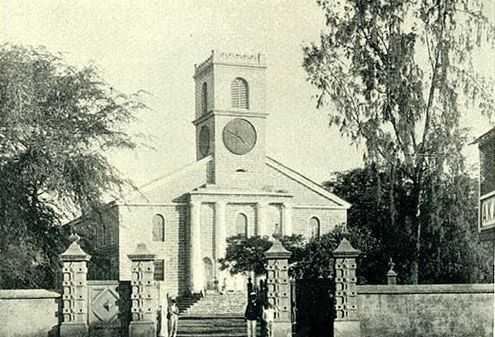Did you know that the Hawaiian Kingdom had its own national holidays that were celebrated with as much zeal and pride as the Fourth of July is by Americans and Bastille Day by the French?
Lā Hoʻihoʻi Ea, literally the day sovereignty was restored, was a holiday celebrated in the Kingdom of Hawaiʻi. Modern observations of this day include ceremonies taking place at different sites around Hawaiʻi, including a key commemoration at Thomas Square in Honolulu. This year’s celebration will take place on Sunday, July 30, from 11 a.m. to 6 p.m. at Honolulu Hale.
The following is a narrative of the events that brought about this important day.
In the year 1825, Richard Charlton arrived in Hawai‘i to assume the newly-created position of British ambassador to the islands. Fifteen years later, in 1840, his false claim to a parcel of land sparked the “Paulet Episode,” causing the forced cession and restoration of the sovereignty of the Hawaiian Islands.
To substantiate his claim, Charlton submitted to Kauikeaouli, King Kamehameha III, what he asserted to be a 299-year lease for the land in question. This land was not his personal residence, Wailele, but an adjoining parcel named Pūlaholaho which was occupied by the retainers and heirs of Ka‘ahumanu. Charlton attested that it was granted to him by Kalanimoku in 1826.
Kamehameha III rejected the claim, citing the fact that Kalanimoku, then kuhina nui or prime minister of the Hawaiian Kingdom, did not have the authority in 1826 to grant the lease. At that time, Ka‘ahumanu was kuhina nui, and only she and the king had the power to execute such grants.
Nearly two years after his claim was rejected, Charlton prepared to return to England to further press his case against the Hawaiian government.
Before taking leave, he appointed Alexander Simpson to assume the role of “acting consul” in his stead. Simpson was a Hudson’s Bay Company trader stationed in Honolulu. The Hawaiian government, however, never recognized Simpson as the legitimate replacement for Consul Charlton.
Charlton set sail in September of 1842. Lord George Paulet, a captain in the British Navy, was in Mexico when Charlton arrived there en route to London. Having Paulet’s audience, Charlton voiced his complaints about the mistreatment he and other British subjects had received in Hawai‘i and promoted the idea of annexing the islands to the crown.
When Charlton’s story reached the ears of Rear Admiral Richard Thomas, a commander of British naval forces in the Pacific, Captain Paulet was sent to investigate the incident. He landed in Honolulu on February 10, 1843.
Paulet was quite set on the idea that Hawai‘i was his for the taking. He swiftly implemented the era’s commonplace diplomatic practice of gun-boat diplomacy, which forced the kingdom under duress via threat of violence. On February 25, 1843, Kamehameha III ceded Hawai‘i under protest and appeal to the queen of Britain.
One of Paulet’s earliest orders following the cession-under-protest ceremony in Honolulu was for all of the Hawaiian flags to be collected and destroyed.
Meanwhile, months before this British occupation commenced, Kamehameha III had sent his own diplomatic envoys abroad to secure international recognition of Hawai‘i as an independent nation. By mid-1843, the United States had already given their formal support and France their verbal assurance.
Admiral Thomas, after hearing conflicting reports about the situation in the islands, entered Honolulu harbor on July 26 and immediately requested an interview with the king. Edmund James Carpenter described the scene in his book, “America in Hawaii.”
“This officer brought the agreeable news that the act of Lord George Paulet had been disavowed and the deed of cession repudiated, and by open declaration he announced that he does not accept of the provisional cession of the Hawaiian Islands made on the twenty fifth day of February 1843 but that he considers His Majesty Kamehameha III the legitimate king of those Islands and he assures His Majesty that the sentiments of his sovereign toward him are those of unvarying friendship and esteem that Her Majesty sincerely desires King Kamehameha to be treated as an independent sovereign leaving the administration of justice in his own hands the faithful discharge of which will promote his happiness and the prosperity of his dominions. The flag of the Hawaiian monarchy was then restored to its place the British flag removed and the episode ended.”
On July 31, 1843, Thomas officially restored the sovereignty of the Hawaiian Islands to Kamehameha III. The Union Jack was lowered and the hae Hawai‘i raised during a historic ceremony in Honolulu. The location of this event is known today as Thomas Square and was dedicated in honor of Admiral Thomas and this pivotal moment in Hawaiian history.
Later that same day, Kauikeaouli addressed his people on the front steps of Kawaiaha‘o Church, proclaiming what would become Hawai‘i’s motto:
“Ua mau ke ea o ka ‘āina i ka pono”
The sovereignty of the land is preserved through justice
This day was celebrated as a national holiday in the Hawaiian Kingdom for the next 50 years and is known as Lā Ho‘iho‘i Ea, Restoration Day.
While Charlton’s land claim was resolved successfully by the kingdom and indirectly elevated Hawai‘i’s status as a member of the Family of Nations, it had another direct consequence: the Māhele of 1848, which forever changed the Hawaiian worldview of land tenure.

On July 31, 1843 Kamehameha III addressed his people on the front steps of Kawaiaha‘o Church, proclaiming what would become Hawai‘i’s motto: “Ua mau ke ea o ka ‘āina i ka pono” The sovereignty of the land is preserved through justice.

Kauikeaouli, King Kamehameha III

Admiral Richard Thomas

Lā Hoʻihoʻi Ea will be commemorated on Sunday, July 30, from 11 a.m. to 6 p.m. at Honolulu Hale.
TAGS
sp2020 goal 3,
hookahua
CATEGORIES
Kaipuolono Article, Themes, Culture, Community, Newsroom, Department News
Print with photos
Print text only










